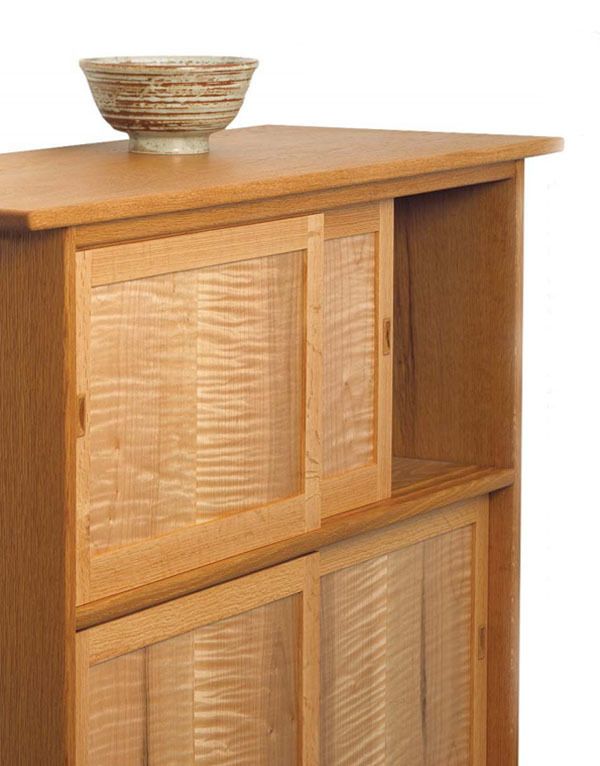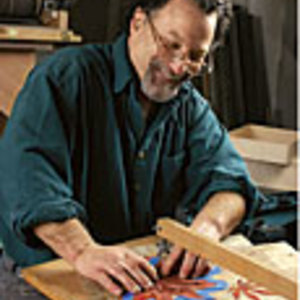Sliding Doors for Furniture
Build attractive doors that slide smoothly
Synopsis: Seth Janofsky loves the look and convenience of sliding doors in the furniture he designs. A well-made sliding door is almost effortless to open, can be lifted off its track at any time, and doesn’t require hinges or lots of fitting and refitting. Yet sliding doors are not appropriate for every project. In this article, Janofsky gives an overview of how and when to add sliding doors to a piece of furniture.
From Fine Woodworking #172
I like to use sliding doors in my work. If they are appropriate for a cabinet I’m making, I’ll often choose them over hinged doors. Sliding doors can be either more or less sophisticated in their design and proportions, but making the tracks and fitting the doors are pretty straightforward.
A well-made sliding door is a pleasure to use. When built properly, even a large door will slide almost effortlessly. Although it involves wood sliding on wood, a good door might as well be running on ball bearings. And, speaking for myself, I appreciate not having to go through the tedious process of carefully mortising for hinges and fitting and refitting to get the doors just right. Another convenient attribute of sliding doors is that they are not attached to the cabinet but can be lifted in and out of their tracks at any time.
For practical reasons, however, sliding doors sometimes are inappropriate. Think about the ways the cabinet will be used. Sometimes it’s desirable to have all of the doors on a cabinet open at once, in which case hinged doors are a better choice.
The proportion of the doors is another consideration. As a practical guideline, doors will slide well when their height is less than two and a half times their width. As with drawers, the longer the door’s running surface relative to its height, the smoother the sliding action.
Doors run much more smoothly when they do not actually rest on the bottom of the grooves in the lower track, but rather on a small ledge. This is achieved by adding a rabbet at the top and bottom of the door, leaving thick tongues at those locations, and then cutting the grooves to fit the tongues. I usually place this rabbet along the front edge of the door, though most Japanese cabinet doors have this ledge along the back. The tongue does not bottom out in the lower grooves, leaving a gap for crud to gather without derailing the door or scarring the wood.
Start with the tracks: The first thing to note is that the grooves in the lower track can be quite shallow and still function well (in most furniture projects I make the grooves between 1⁄16 in. and 1⁄8 in. deep). But the grooves in the upper track need to be considerably deeper— not only to prevent the door from falling out of the cabinet but also to allow the door to be lifted off the lower track for installation and removal. I usually make the upper grooves 3⁄8 in. to 1⁄2 in. deep.
For the full article, download the PDF below:
Fine Woodworking Recommended Products

Bessey EKH Trigger Clamps

Jorgensen 6 inch Bar Clamp Set, 4 Pack






















Log in or create an account to post a comment.
Sign up Log in